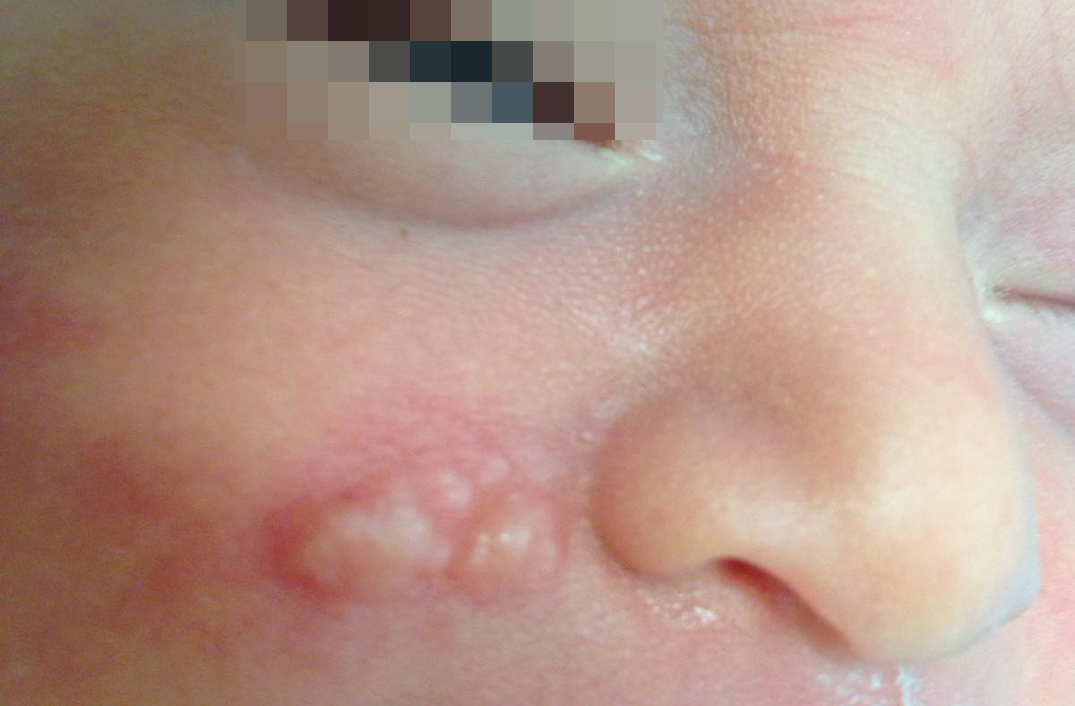Difficulty in the clinical diagnosis of cutaneous nodules.

Downloads
DOI:
https://doi.org/10.26326/2281-9649.28.2.1860How to Cite
Abstract
The most frequent forms of mastocytosis in the child are mastocytoma and urticaria pigmentosa. We talk about mastocytoma when there are one or a few lesions, maximum 5 (8), but this limit is arbitrary. Mastocytoma is the most common form of mastocytosis at birth; in our series mastocytoma constitutes 46% of all cases of mastocytosis (2), while in cases that also include the adult it does not exceed 4% of cases (4). At birth mastocytoma is much more frequent than mastocytosis; a third of the cases of mastocytoma but only a tenth of the cases of mastocytosis are really present at birth (2). The histamine that is released by its cells, mainly due to mechanical and thermal stimuli, is responsible for the characteristic Darier’s sign: the lesion swells, loses its brown color, gets reddish because of vasodilation or sometimes becomes white as in urticaria for compression of the vessels by the extravasated plasma; sometimes the urtication is followed by the formation of a true blister that repairs with crust formation. The Darier’s sign is not pathognomonic of mastocytosis, possibly occurring in juvenile xanthogranuloma (6), in nodular scabies (3, 5) in acute lymphoblastic leukemia (9); moreover, in the nevus leiomyoma one can observe a pseudo-Darier. In addition to being present in conditions other than mastocytosis, the Darier’s sign may be missing, as in our case (1, 7).
